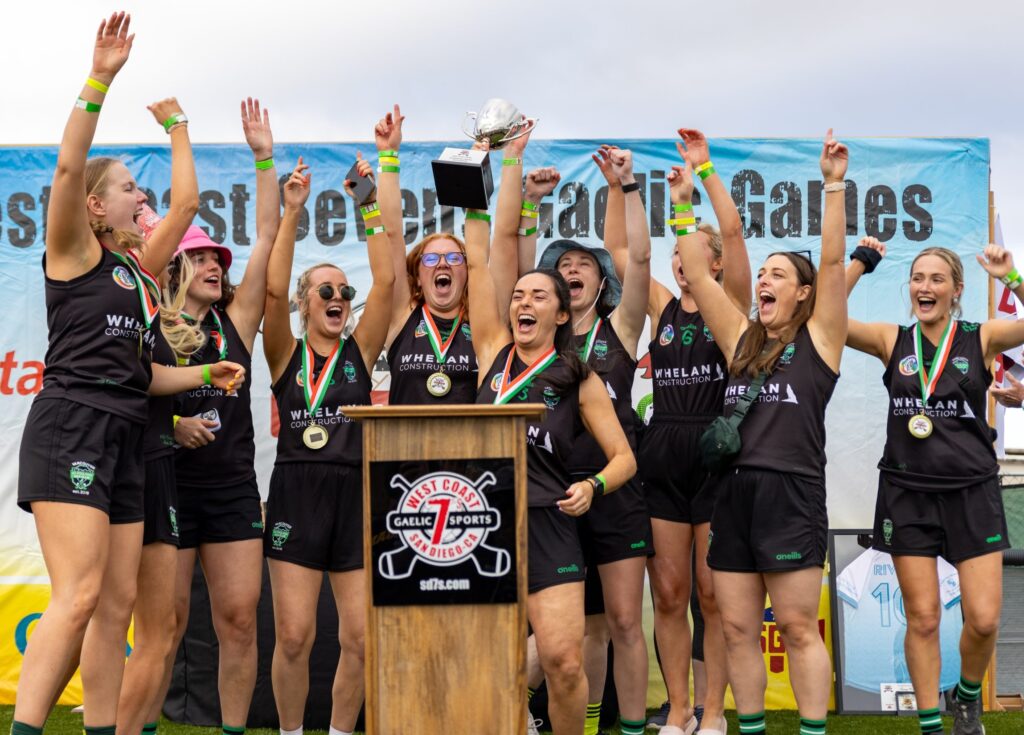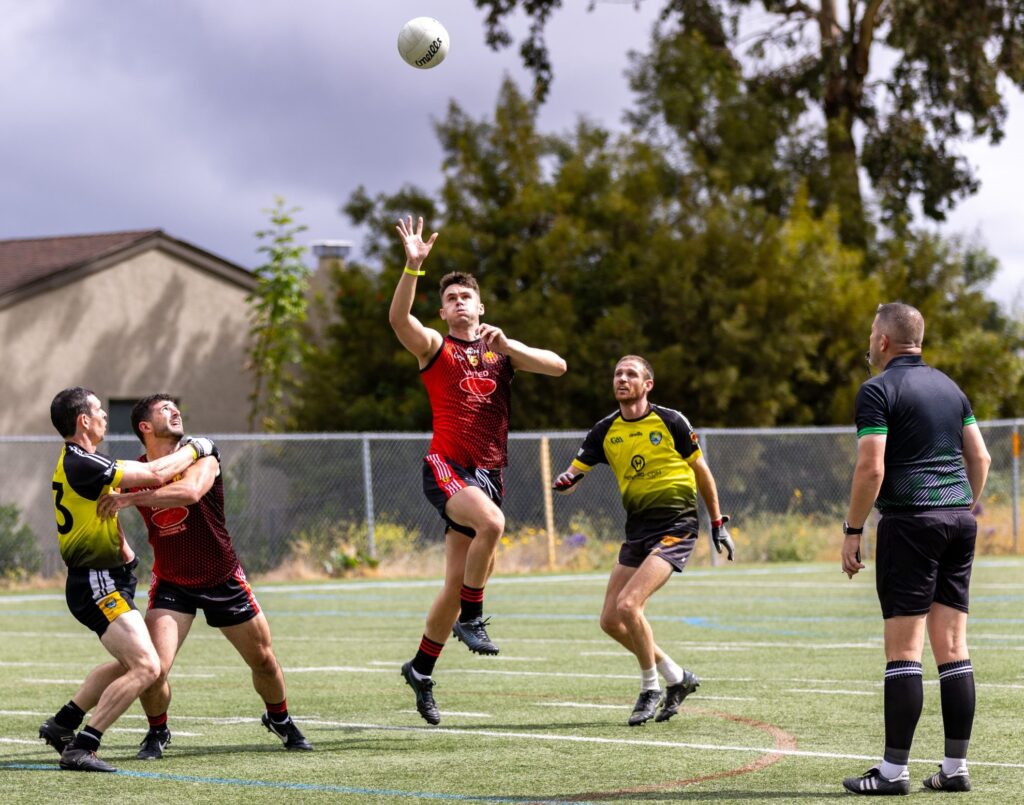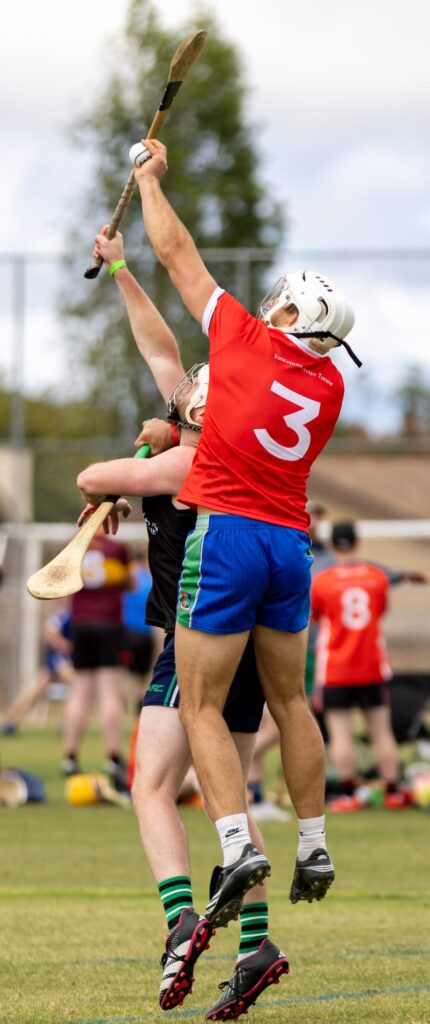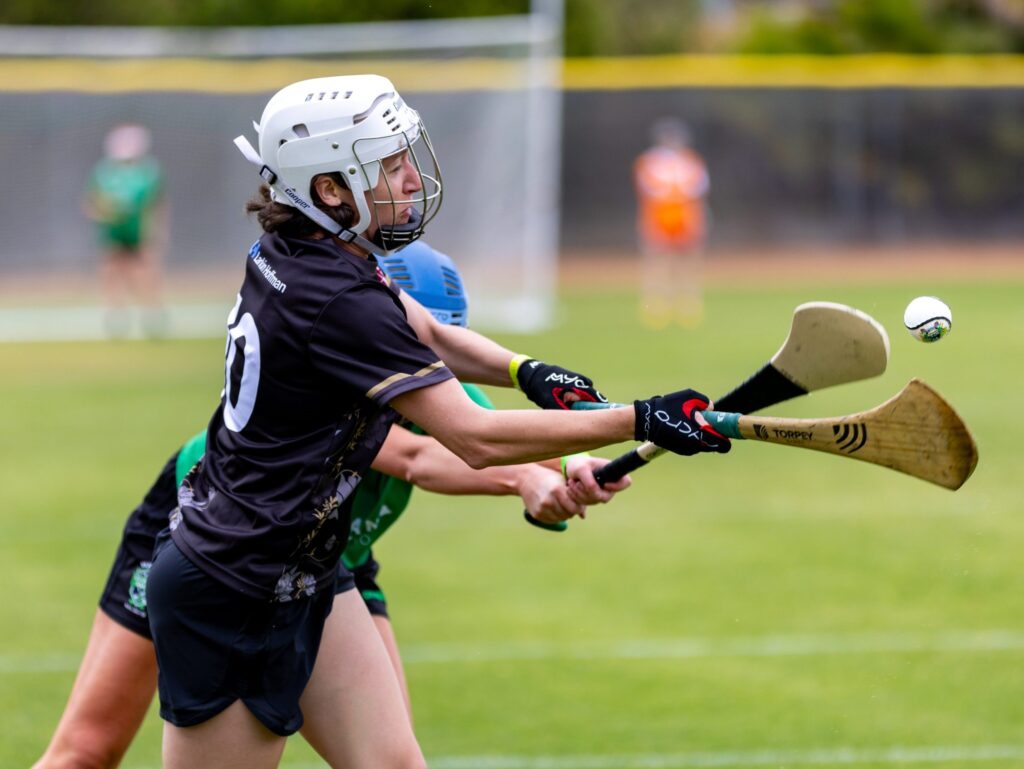San Diego Gaelic Athletic Association (SDGAA)
SDGAA was founded in 2018 as a non-profit organization to promote Irish sports and culture in San Diego County. Irish sports consist of men’s and women’s Gaelic football, hurling, and camogie. These field sports have their origins from Ireland but have been played in the United States, and worldwide, for decades with nationwide clubs under the guidance and support of the USGAA (United States Gaelic Athletic Association) organization and their respective Divisional committees.
SDGAA is the organizing committee responsible for hosting the West Coast Sevens tournament over Memorial Day weekend each year. In 2024, SDGAA celebrated its 10th anniversary with a record number of teams from Canada and across the U.S.



What is Gaelic Football?
Gaelic football commonly known as simply Gaelic, GAA or football, is an Irish team sport. A form of football, it is played between two teams of 15 players (13 players in North America) on a rectangular grass pitch. The objective of the sport is to score by kicking or punching the ball into the other team’s goal or between two upright posts above the goal and over a crossbar. Players can advance the ball up the field with a combination of carrying, bouncing, kicking, hand-passing, and soloing (dropping the ball and then toe-kicking the ball upward into the hands). In the game, two types of scores are possible: points and goals. A point is awarded for kicking or hand-passing the ball over the crossbar, signaled by the umpire raising a white flag. A goal is awarded for kicking the ball under the crossbar into the net, signaled by the umpire raising a green flag. Positions in Gaelic football are similar to those in other football codes and comprise one goalkeeper, six backs (five in U.S.), two midfielders, and six forwards (five in U.S.), with a variable number of substitutes.
The first legal reference to football in Ireland was in 1308, when John McCrocan, a spectator at a football game at Novum Castrum de Leuan (the New Castle of the Lyons or Newcastle), was charged with accidentally stabbing a player named William Bernard. A field near Newcastle, South Dublin is still known as the football field. The Statute of Galway of 1527 allowed the playing of “foot balle” and archery but banned “‘hokie’—the hurling of a little ball with sticks or staves” as well as other sports.
The first account outside of Ireland of what the founders of modern Gaelic football referred to as Irish football dates to 1873. It is noted that in County Kerry in 1870 only soccer and rugby were played, although historians note that by 1874 a third, very different form of football began to emerge and spread across South-West Ireland. At Killarney, these highly popular matches were virtually indistinguishable from the Victorian Rules (first codified in 1859 and then played extensively in the Colony of Victoria and Colony of Queensland and to a lesser extent in the colonies of New South Wales and New Zealand). This kicking variety of football was even played with an oval ball which became customary in Australia in the 1870s and that scoring was achieved only by kicking goals. A major difference between the two styles is that the Irish variety featured high kicking “up and under” whereas in colonial Victoria, the little marks or foot passes were much more common. While the founders of the game were all familiar with or played rugby, few had played Irish football as it was so rare outside of the South-West, though the influence of this football on the founders was obvious, this is most likely the “football kicking under the Irish rules” that is recalled in County Cork.
Gaelic football spread throughout the world in the late 19th century. Despite a huge Irish American population there was limited awareness of the game in America, though there was limited knowledge of its rules, apart from that the ball cannot be lifted from the ground by hand, and throttling is banned. It was first played in North America in the 1890s with games being played in both Canada and the United States in 1892. More than a dozen clubs had been established in the US by 1893. The first clubs appeared in England in 1896. Around 1900 the game began to resemble more closely to the running game of today, players were able to lift the ball off the ground and run and carry it if they bounced it every 4 yards. The first match played in Australia was in 1902 finding a niche in Queensland during a period when Australian football there was in recess. In 1939, at Yankee Stadium in New York City, Kerry played Galway in front of a crowd of 70,000 spectators. while Wembley Stadium was hosting an annual exhibition of Gaelic football games in England, before tens of thousands of spectators by 1958.
Ladies Gaelic football has become increasingly popular with women since the 1970s and it is played to the same rules as men’s football with some slight variations.
What is Hurling
Hurling is an outdoor team game of ancient Irish origin, played by men. One of Ireland’s native Gaelic games, it shares a number of features with Gaelic football, such as the field and goals, the number of players and much terminology. The same game played by women is called camogie, which shares a common Gaelic root.
The objective of the game is for players to use an ash wood stick called a hurl to hit a small ball called a sliotar between the opponent’s goalposts either over the crossbar for one point or under the crossbar into a net guarded by a goalkeeper for three points. The sliotar can be caught in the hand and carried for not more than four steps, struck in the air or struck on the ground with the hurl, it can be kicked, or slapped with an open hand (the hand pass), for short-range passing. A player who wants to carry the ball for more than four steps has to bounce or balance the sliotar on the end of the stick (solo), and the ball can be handled only twice while in the player’s possession.
Hurling is older than the recorded history of Ireland. It is thought to predate Christianity, having come to Ireland with the Celts. The earliest written references to the sport in Brehon law date from the 5th century. Seamus King’s book A History of Hurling references oral history going back as far as 1200 BC of the game being played in Tara, County Meath. Hurling is related to the games of shinty that is played primarily in Scotland, cammag on the Isle of Man and Bando which was played formerly in England and Wales. The tale of the Táin Bó Cuailnge (drawing on earlier legends) describes the hero Cúchulainn playing hurling at Emain Macha. Similar tales are told about Fionn Mac Cumhail and the Fianna, his legendary warrior band. Recorded references to hurling appear in many places such as the fourteenth century Statutes of Kilkenny and a fifteenth-century grave slab surviving in Inishowen, County Donegal.
The founding of the Gaelic Athletic Association (GAA) in 1884 in Hayes Hotel, Thurles, County Tipperary, ended decline by organizing the game around a common set of written rules. In 1888, Tipperary represented by Thurles Blues beat Meelick of Galway to win the first All-Ireland Championship. However, the twentieth century saw Cork, Kilkenny as well as Tipperary dominate hurling with each of these counties winning more than 20 All-Ireland titles each.
Hurling was an unofficial sport at the 1904 Summer Olympics in St. Louis, Missouri, in the United States. In the final, Fenian F.C. (Chicago) USA beat Innisfails (St. Louis). This was the only time hurling was in the Olympics.
As hurling entered the new millennium, it has remained Ireland’s second most popular sport behind Gaelic football.

What is Camogie
Camogie is an Irish stick-and-ball team sport played by women. Camogie is played by 100,000 women in Ireland and worldwide, largely among Irish communities. A variant of the game “hurling” (which is played by men only), it is organized by the Dublin-based Camogie Association or An Cumann Camógaíochta.
The name was invented by Tadhg Ua Donnchadha (Tórna) at meetings in 1903 in advance of the first matches in 1904. The term camogie is derived from the name of the stick used in the game. Men play hurling using a curved stick called a camán in Irish. Women in the early camogie games used a shorter stick described by the diminutive form camóg. The suffix – íocht (originally “uidheacht”) was added to both words to give names for the sports: camánaíocht (which became iománaíocht) and camógaíocht. When the Gaelic Athletic Association was founded in 1884 the English-origin name “hurling” was given to the men’s game. When an organization for women was set up in 1904, it was decided to anglicize the Irish name camógaíocht to camogie.
The official launch of Camogie took place with the first public match between Craobh an Chéitinnigh (Keatings branch of the Gaelic League) and Cúchulainns on 17 July at a Feis in Navan. Máire Ní Chinnéide and Cáit Ní Dhonnchadha, two prominent Irish-language enthusiasts and cultural nationalists, were credited with having created the sport, with the assistance of Ní Dhonnchadha’s scholarly brother Tadhg Ó Donnchadha, who drew up its rules. Thus, although camogie was founded by women, and independently run (although closely linked to the GAA), there was, from the outset, a small yet powerful male presence within its administrative ranks.
An Cumann Camógaíochta has a similar structure to the Gaelic Athletic Association, with an Annual Congress every spring which decides on policy and major issues such as rule changes, and an executive council—the Ard Chomhairle—which deals with short-term issues and governance. The game is administered from a headquarters in Croke Park in Dublin with four provincial councils and affiliates in Asia, Australia, Britain, Europe, New York, New Zealand and North America.
UNESCO lists Camogie as an element of Intangible Cultural Heritage. The game is referenced in Waiting for Godot by Irish playwright Samuel Beckett.

